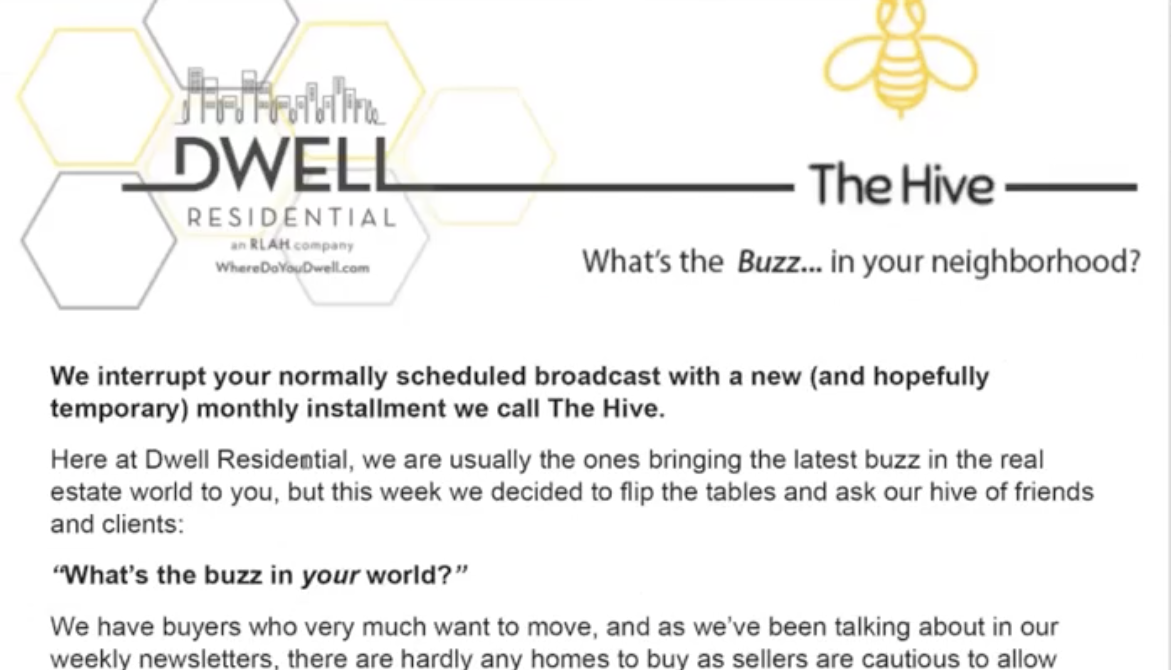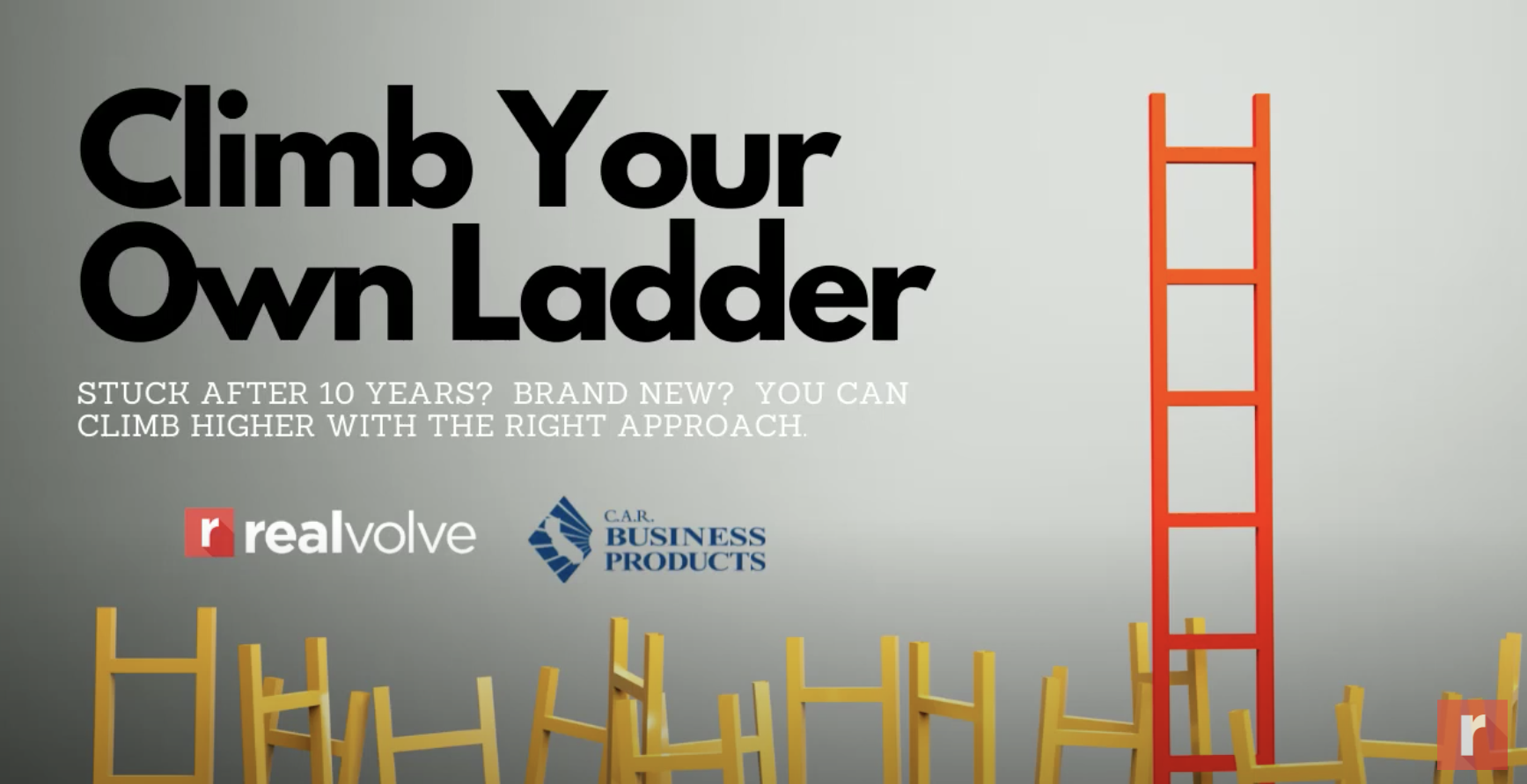Despite the fact that now is a great time to sell, many homeowners are hesitant to list because they have nowhere to go—inventory has been at record lows over the past year and prices have skyrocketed.
And yet, some real estate agents are experiencing their best year ever. One agent who’s certainly thriving is Jennifer Myers, founding broker/owner of Dwell Residential Brokerage and creator of Agent Grad School. You might know her from her podcast, Confessions of a Top-Producing Real Estate Agent.
Jennifer recently joined us for a webinar to share her approach to generating listings. Her method, which is all about getting the clients to come to you (rather than chasing listings), is guaranteed to get you results—even during an extreme market. Check out the full webinar or read our recap below to learn how to apply this 4-step strategy to your business!
Step 1: Identify (and solve) your clients’ biggest problem
The first step, Jennifer says, is answering the question “Why you, why now?”
Why should somebody choose you above all other options, including doing nothing at all?
To answer this question, you have to know who you’re talking to and what unique problem they have that you can solve.
The people that we are talking to are those people who want to sell their house, but think they can’t for whatever reason, or they have some big obstacles, some problem to solve, something that’s preventing them from moving forward.
Your clients are likely facing the same problem Jennifer’s clients are experiencing: in today’s extreme seller’s market, would-be sellers are doubting their ability to buy their next home.
For most of our markets, one thing is preventing people from selling their houses: they have nowhere to go.
Once you’ve identified your client’s biggest problem, that’s what you should talk about in your marketing. Let them know that you have the solution to their obstacle. After all, they’re not going to care about a “Just Listed” postcard unless you also tell them, on that same postcard, how you can help them find their next house.
Related: 10 Real Estate Lead Generation Ideas
Step 2: Provide value in your marketing
In your marketing, you should always be providing value.
You want to be the go-to resource for everybody you know about all things related to real estate.
Not bugging them for listings, not always talking about selling, but giving them valuable information.
When you constantly provide value, you position yourself as the go-to expert on all things real estate. So when someone in your area is ready to sell their home, they’re going to reach out to you.
There are many effective marketing platforms—postcards, social media, etc.—but email has the best ROI. So Jennifer sends out a weekly email to her list of contacts:
And that email is not about the houses I’ve sold. It’s not about what’s happening in the market, because they already know; they’re hearing it, they’re reading the papers.
That weekly email is really about helping them get unstuck.
I know that most of my audience is people who are wanting to sell their first house and buy their forever house. And I know that the two things they’re most worried about are where they’re going to go and how they’re going to get there if they haven’t sold their house first. So every single week, I send an email talking about those things. So, for example, I send an email about how they could borrow temporarily from their 401(k); how they could have a bridge loan; how, in certain markets, there are things like NOC or any of these other companies who can help them buy first before having to sell.
Here are a few more examples of her email topics:
- How to prep your house for sale, even if you could sell it in a day, and why that’s so important
- Whether or not you should sell off market; when is a good time, when is a bad time
- Ways you can buy first, rather than waiting to sell before buying
- How she can find homes off-market
- Why increasing interest rates can actually create a great opportunity for you to buy with less competition from other buyers
- Tips for keeping your home maintained during the summer months
Her emails aren’t always about selling, as you can see from that last example. While she always keeps it relevant to real estate—because that’s what she wants to be known for—she also includes non-sales-related tips for homeowners. “Just things that add value to their lives,” she says.
And I do it consistently, week after week after week, so that I’m constantly educating on how to be great homeowners and what it looks like to remove their obstacles. And especially right now, I’m not constantly focused on market statistics, market upticks. They know that already. They know what’s selling in their neighborhood. That doesn’t provide any value. So I’m talking about the things that matter to them.
This works for marketing to your sphere—the people you know—and it can also be effective for reaching out to people you don’t know. If you are new to real estate (or just new to a particular market), do your research. Figure out what homeowners in the area want—and what’s standing in their way. And then tell them how you can solve their problem.
When you provide value in your marketing, you’re not bugging people. You’re helping them. And when they’re ready to sell, they’re going to come straight to you.
Step 3: Start with a pre-listing package
When a potential seller reaches out to you, don’t jump straight into a listing presentation. Instead, provide them with a pre-listing package that reiterates your value. This package should explain who you are, why you’re in this business, and how you can solve their problems. It should also include some homework for the client, asking them to describe what they’re looking for in their next home.
Give them some time to flip through it before setting up a listing appointment.
And by the time I get to the listing appointment, they are already sold.
Step 4: Don’t make your listing presentation about price
You don’t want your client in a headspace where they’re just looking for the agent who can get them the highest price. Because, as you know, it’s the market that sets the price. Not the agent.
Instead, demonstrate your expertise by explaining how pricing works:
I’ll say, “Well, here’s what has sold recently in your neighborhood, but before we can talk about price, we’ve got to talk about timing.” Because depending on the time of year and what sells between now and then, the price conversation is a totally flexible thing.
And then I’ll say, “We’re going to constantly be looking at what’s selling in your neighborhood. These prices may go up and down by the time we get to your listing date.” Also, it depends on what they’ve agreed to when I walk through the house with them about what they’re going to do and not do. I can’t walk in knowing what the price is. I’ve never seen the house. I don’t know how it compares. I don’t know what time of year. If they want to sell in December, I’m going to price it way differently than in the spring in my market. So educate them about how pricing works.
Pricing is not your value proposition. The market sets the price. Your job is to give them the most money possible.
And when the going gets tough, your clients will have your back
This method works. When you provide value to your audience on a regular basis—by understanding their problems, removing their obstacles, and helping them be great homeowners—you won’t have to chase down listings. The listings will come to you.
And because they’ll appreciate the months or years of value you’ve added to their lives, they’ll be happy to reciprocate when asked. When inventory first began to dry up at the beginning of the pandemic, Jennifer realized she needed to ask her past clients for help finding homes for her buyers. She created The Hive, a weekly email in which she listed the types of homes her buyers were looking for. She sent this to all of her past clients and said, “If you or anybody has any of these types of homes, please be in touch with me.”

The response was phenomenal:
We got so many people telling me things like they went in the alley and waited until the woman put her trash out and then gave me her phone number. I mean, you wouldn’t believe the number of introductions that I got out of this. And it’s because I didn’t start here. I was doing that weekly value add. And then I started asking them for a favor. And they gave it to me.
[WEBINAR] Climb Your Own Ladder with Jennifer Myers
To learn even more about how to generate more listings (and get them coming to you!) watch the full webinar featuring Jennifer Myers.






